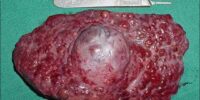Exploring Common Cancer Risk Factors And Prevention Strategies
Cancer remains one of the leading causes of death worldwide, with millions of new cases diagnosed each year. Understanding the common risk factors associated with cancer development is crucial for effective prevention strategies.
This article aims to explore various risk factors that contribute to the development of cancer and highlight preventive measures that can be adopted.
Tobacco use and smoking have long been recognized as major contributors to cancer incidence. Unhealthy diet choices and sedentary lifestyles also play a significant role in increasing cancer risk. Exposure to carcinogens, both in occupational and environmental settings, poses another substantial threat. Additionally, genetic factors and family history can predispose individuals to certain types of cancers.
Chronic inflammation has emerged as a potential link between various cancers and inflammatory diseases. Hormonal imbalances and certain medications may also influence cancer development. Furthermore, environmental factors such as pollution and radiation exposure can significantly impact cancer incidence.
Lastly, this article will discuss early detection methods like screening programs that aid in identifying cancers at earlier stages when treatment options are more effective. By understanding these risk factors and implementing appropriate preventive measures, we can collectively work towards reducing the burden of cancer on individuals and society at large.
Key Takeaways
- Tobacco use and smoking are major contributors to cancer incidence.
- Unhealthy diet choices and sedentary lifestyles increase cancer risk.
- Exposure to carcinogens in occupational and environmental settings poses a substantial threat.
- Early detection methods like screening programs aid in identifying cancers at earlier stages.
Tobacco Use and Smoking
Tobacco use and smoking are widely recognized as significant risk factors for the development of various types of cancer. The harmful effects of tobacco on human health have been extensively documented, with numerous studies demonstrating a strong link between smoking and an increased risk of cancer initiation and progression.
Tobacco smoke contains more than 7,000 chemicals, including at least 70 known carcinogens that directly contribute to cellular damage and DNA mutations. These mutagenic changes can disrupt normal cell growth and division processes, leading to uncontrolled proliferation and the formation of malignant tumors.
Additionally, smoking has been implicated in promoting tumor invasion, angiogenesis, and metastasis through its impact on inflammatory responses and immune system function. Given the detrimental consequences of tobacco use on cancer risk, implementing effective prevention strategies such as anti-smoking campaigns, public education programs, and strict tobacco control policies remains crucial in reducing the burden of cancer worldwide.
Unhealthy Diet and Lack of Physical Activity
Consuming a diet high in processed foods and low in fruits and vegetables, combined with a sedentary lifestyle, has emerged as a significant contributor to the development of various types of cancer. This unhealthy combination of dietary choices and lack of physical activity increases the risk of obesity, which is strongly associated with an increased incidence of cancers such as breast, colorectal, endometrial, kidney, pancreatic, and liver cancer. Additionally, this lifestyle can lead to chronic inflammation in the body, which plays a crucial role in tumor initiation and progression.
Sub-lists:
Processed Foods:
- High levels of saturated fats
- Added sugars
- Artificial preservatives
Lack of Fruits and Vegetables:
- Insufficient intake of essential vitamins and minerals
- Reduced antioxidant capacity
Sedentary Lifestyle:
- Decreased energy expenditure
- Impaired immune function
- Altered hormone metabolism
Exposure to Carcinogens
Exposure to various environmental and occupational carcinogens has been identified as a significant contributing factor in the development of cancer. Carcinogens are substances or agents that have the potential to cause cancer by damaging DNA or disrupting cellular processes.
Common examples of carcinogens include:
- Tobacco smoke
- Industrial chemicals
- Radiation
- Certain viruses
- Asbestos
These substances can enter the body through inhalation, ingestion, or skin contact, leading to genetic mutations and abnormal cell growth. The risk of developing cancer due to exposure to carcinogens depends on factors such as duration and intensity of exposure, individual susceptibility, and preventive measures taken.
To minimize the risk, it is crucial to identify and avoid known carcinogens in both occupational and environmental settings. This can be achieved through:
- Regulatory measures
- Workplace safety protocols
- Public health campaigns promoting awareness about potential hazards
- Lifestyle choices that limit exposure to harmful substances.
Family History and Genetic Factors
Genetic predisposition to cancer can be likened to a hidden thread woven within the fabric of one’s family history, silently influencing the likelihood of developing this formidable disease. Family history plays a crucial role in determining an individual’s susceptibility to certain types of cancer.
It has been observed that individuals with close relatives who have had cancer are at a higher risk of developing the same type of cancer themselves. Certain genetic mutations, such as those in BRCA1 and BRCA2 genes, significantly increase the risk of breast and ovarian cancers. Genetic testing can identify these mutations and allow individuals to take preventive measures or undergo early screenings.
Additionally, inherited conditions like Lynch syndrome and Li-Fraumeni syndrome also contribute to increased cancer risks. Understanding one’s family history and genetic factors can help healthcare professionals develop personalized prevention strategies for high-risk individuals, ultimately reducing the burden of cancer on affected families.
Chronic Inflammation
Chronic inflammation, like a smoldering fire within the body, silently fuels the development and progression of various diseases. In the context of cancer, chronic inflammation is increasingly recognized as a key player in tumor initiation and promotion. Here are four important points to consider regarding chronic inflammation and its association with cancer risk:
-
Increased production of inflammatory molecules: Chronic inflammation leads to the release of various inflammatory molecules such as cytokines, chemokines, and growth factors that create an environment conducive to cancer development.
-
Activation of signaling pathways: Inflammatory signals can activate specific signaling pathways within cells that promote cell proliferation, survival, angiogenesis, and tissue invasion – all critical steps in cancer progression.
-
DNA damage and mutagenesis: Chronic inflammation generates oxidative stress and increases DNA damage, leading to genetic mutations that can drive the transformation of normal cells into cancerous ones.
-
Immune system dysregulation: Prolonged exposure to inflammatory mediators disrupts immune responses, impairing the body’s ability to detect and eliminate abnormal cells effectively.
Understanding these mechanisms underlying chronic inflammation-induced carcinogenesis is crucial for developing effective prevention strategies targeting this important risk factor for cancer.
Hormonal Factors
Hormonal factors have been extensively studied in relation to their potential role in the development and progression of various diseases, including cancer. Research has shown that certain hormones, such as estrogen and progesterone, can influence the growth of hormone-sensitive tumors, such as breast and ovarian cancer.
In postmenopausal women, higher levels of circulating estrogen have been associated with an increased risk of developing these types of cancers. Additionally, hormonal imbalances caused by conditions like polycystic ovary syndrome (PCOS) or hormone replacement therapy (HRT) have also been linked to an elevated risk of certain cancers.
To mitigate these risks, methods such as hormonal therapy or lifestyle modifications can be employed to regulate hormone levels. However, further research is needed to fully understand the complex interactions between hormones and cancer development in order to develop effective prevention strategies.
Environmental Factors
Exposure to various environmental agents has been extensively studied for their potential association with the development and progression of different diseases, including cancer. Environmental factors play a significant role in increasing the risk of cancer.
Here are some key aspects to consider:
-
Chemical exposure: Carcinogens present in air, water, soil, and household products can lead to DNA damage and increase the risk of cancer.
-
Radiation exposure: Ionizing radiation from sources like medical imaging or nuclear accidents can cause cellular damage and increase cancer risk.
-
Occupational hazards: Certain occupations expose individuals to carcinogenic substances such as asbestos, benzene, or heavy metals that elevate their likelihood of developing cancer.
-
Lifestyle choices: Factors like smoking, excessive alcohol consumption, unhealthy diet, and lack of physical activity contribute to an increased risk of developing certain types of cancers.
Understanding these environmental factors is crucial for implementing effective preventive measures and reducing the burden of cancer on society.
Early Detection and Screening Methods
Early detection and screening methods are essential components in the fight against cancer, providing a window of opportunity to identify and treat the disease at its earliest stages when outcomes are often more favorable. Regular screenings can help detect cancer before symptoms appear, increasing the chances of successful treatment and survival rates. Various screening methods are available for different types of cancer, including mammograms for breast cancer, colonoscopies for colorectal cancer, Pap tests for cervical cancer, and PSA tests for prostate cancer. These screenings involve examining specific parts of the body or testing blood samples to identify abnormal cells or signs of early-stage tumors. It is important to note that while screening can be beneficial in detecting some cancers early, it may not be suitable for all types or individuals. Therefore, healthcare professionals should assess each patient’s risk factors and recommend appropriate screening protocols accordingly.
| Screening Method | Cancer Type | |||
|---|---|---|---|---|
| Mammogram | Breast | |||
| Colonoscopy | Colorectal | |||
| Pap Test | Cervical | |||
| PSA Test | Prostate | |||
| Screening Method | Cancer Type | |||
| ——————— | —————— | |||
| Mammogram | Breast | |||
| Colonoscopy | Colorectal | |||
| Pap Test | Cervical | |||
| PSA Test | Prostate | |||
| [Insert appropriate screening method here] | [Insert corresponding cancer type here] |
The appropriate screening method for each cancer type should be determined based on medical recommendations and guidelines. It is important to consult with healthcare professionals or refer to established protocols to determine the suitable screening method for a specific cancer type.
Frequently Asked Questions
What are some common symptoms of cancer?
Common symptoms of cancer include unexplained weight loss, fatigue, persistent pain, changes in the skin or mole, unusual bleeding or discharge, persistent cough or hoarseness, and difficulty swallowing.
How is cancer diagnosed?
Cancer is typically diagnosed through a combination of medical history, physical examination, imaging tests, and laboratory tests. Biopsies are commonly performed to confirm the presence of cancer by examining cells under a microscope.
What are the treatment options for cancer?
Treatment options for cancer include surgery, chemotherapy, radiation therapy, immunotherapy, targeted therapy, and hormonal therapy. These interventions aim to remove or destroy cancer cells, slow down their growth, relieve symptoms, and improve the overall survival rate of patients.
Are there any alternative or complementary therapies for cancer prevention?
Alternative or complementary therapies for cancer prevention may include practices such as acupuncture, herbal medicine, and mind-body techniques. However, the effectiveness of these approaches is still largely inconclusive and further research is needed to validate their potential benefits.
How can I support a loved one who has been diagnosed with cancer?
Supporting a loved one diagnosed with cancer involves providing emotional support, offering practical assistance, and being a good listener. It is essential to respect their autonomy and decisions while ensuring they have access to appropriate medical care and resources.








